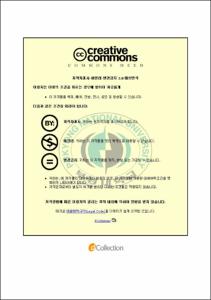DEA 모형을 이용한 우유 대리점의 효율성 분석
- Alternative Title
- A Study on the Efficiency Analysis of Milk Commercial Agencies by Data Envelopment Analysis(DEA)
- Abstract
- DEA model is developed for evaluating the relative efficiencies of the dairy product agencies. The efficiencies are calculated from the agency's and the producer’s points of view. The input and output components are determined based on the cost and benefit factors, respectively. From the producer’s point of view, the outstanding amount, total number of households, financial aids from the producer, and distance from the plant to the agent are determined as input components. Also, the outputs are total sales and rate of sales increase. As such, the input and output components from the agency’s point of view are also determined. Data from the 355 agencies are gathered and the relative efficiencies are evaluated using the input and output model, respectively. As a result, the efficiency of each agency is evaluated and the projection to the efficient agency is suggested for the inefficient agency to be effective. Also, each agency is classified into four groups depending on the cost and efficiency, such as LE(less productive and efficient) and HI(high productive and inefficient) groups. Moreover, the non-parametric analyses are performed to test the hypotheses that the efficiencies between two groups are the same depending on the ages of the agent, total number of households, and number of family accounts.
- Issued Date
- 2007
- Awarded Date
- 2007. 2
- Type
- Dissertation
- Publisher
- 부경대학교 대학원
- Alternative Author(s)
- Shin, Kyung-Yub
- Affiliation
- 부경대학교 대학원
- Department
- 대학원 경영학과
- Advisor
- 성덕현
- Table Of Contents
- I. 서론 = 1
1. 연구배경 및 필요성 = 1
2. 연구의 목적 = 5
3. 연구의 구성 = 7
II. DEA 모형과 기존 연구의 고찰 = 9
1. DEA 모형 = 9
1.1 왜 DEA 모형을 이용하는가? = 9
1.2 CCR 모형 = 12
1.3 BCC 모형 = 14
1.4 Non-discretionary 모형 = 15
2. 기존 연구의 고찰 = 16
III. 연구 방법 및 내용 = 22
1. 평가 대상 = 22
2. 투입물과 산출물의 선정 및 타당성 검토 = 22
3. 분석 자료의 요약 = 32
4. 분석에 사용할 DEA 모형 = 33
IV. DEA 모형 분석 결과 = 35
1. 효율성 분석 결과 = 35
2. 효율성에 의한 대리점 그룹핑 = 37
3. 참조집합의 출현빈도 = 39
4. HE-LI 그래프 분석 = 41
5. Projection = 45
6. 대리점 그룹핑을 통한 효율성 차이 검정 = 48
6.1 전체세대수 = 49
6.2 대리점주의 연령 = 50
6.3 매출액 = 51
6.4 가정구좌수 = 52
6.5 지역 = 53
7. 공급자 관점 모형과 대리점 관점 모형의 효율성 차이 검정 = 55
8. 통제 불가능한 변수와 관련한 DEA 모형 분석 = 57
V. 결론 = 60
1. 요약 및 결론 = 60
2. 한계점 및 향후 연구 방향 = 62
= 64
1. 국내문헌 = 64
2. 외국문헌 = 67
= 70
1. DEA 효율성 분석 결과 = 70
가) 공급자 관점 모형 = 70
나) 대리점 관점 모형 = 82
- Degree
- Master
- Files in This Item:
-
-
Download
 DEA 모형을 이용한 우유 대리점의 효율성 분석.pdf
기타 데이터 / 1.92 MB / Adobe PDF
DEA 모형을 이용한 우유 대리점의 효율성 분석.pdf
기타 데이터 / 1.92 MB / Adobe PDF
-
Items in Repository are protected by copyright, with all rights reserved, unless otherwise indicated.